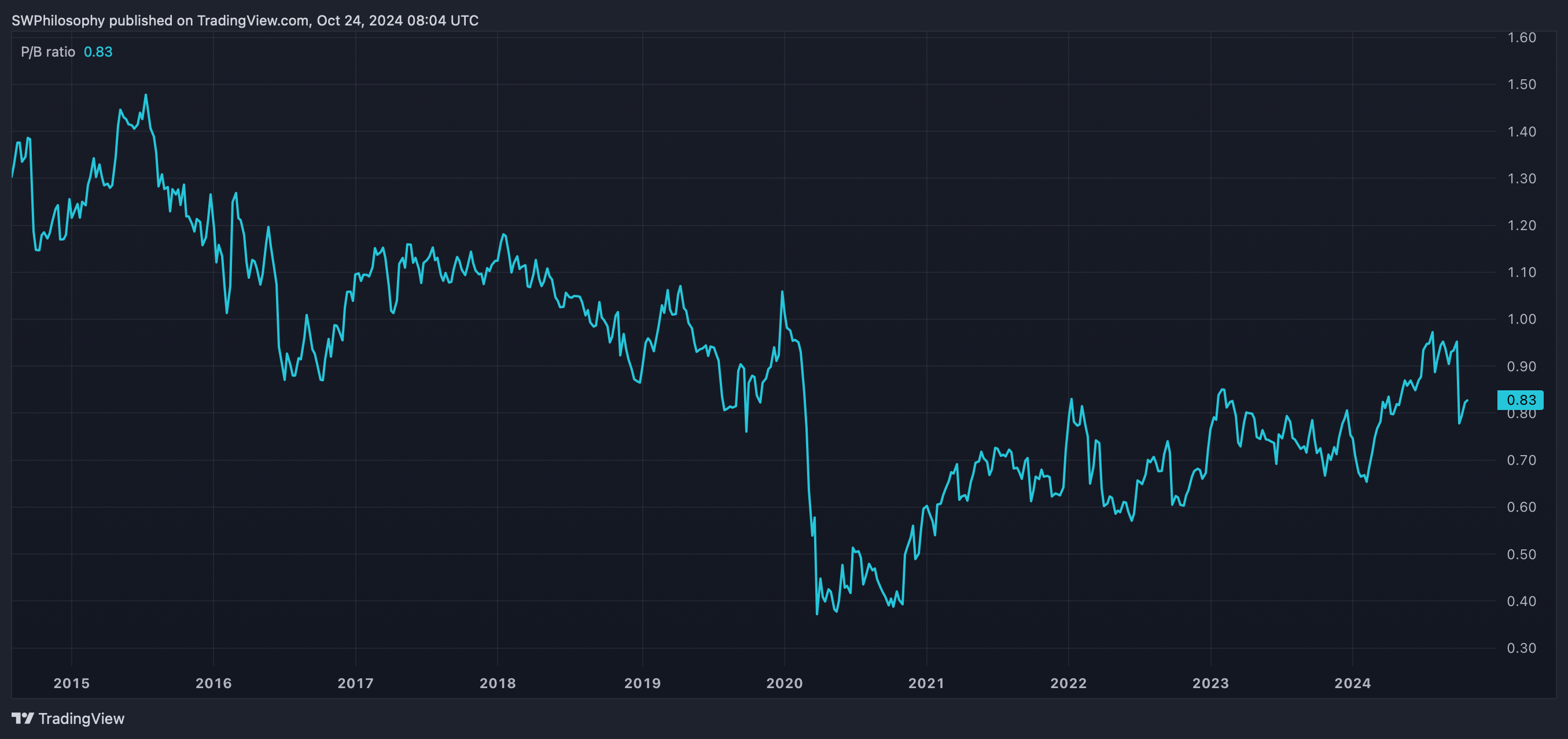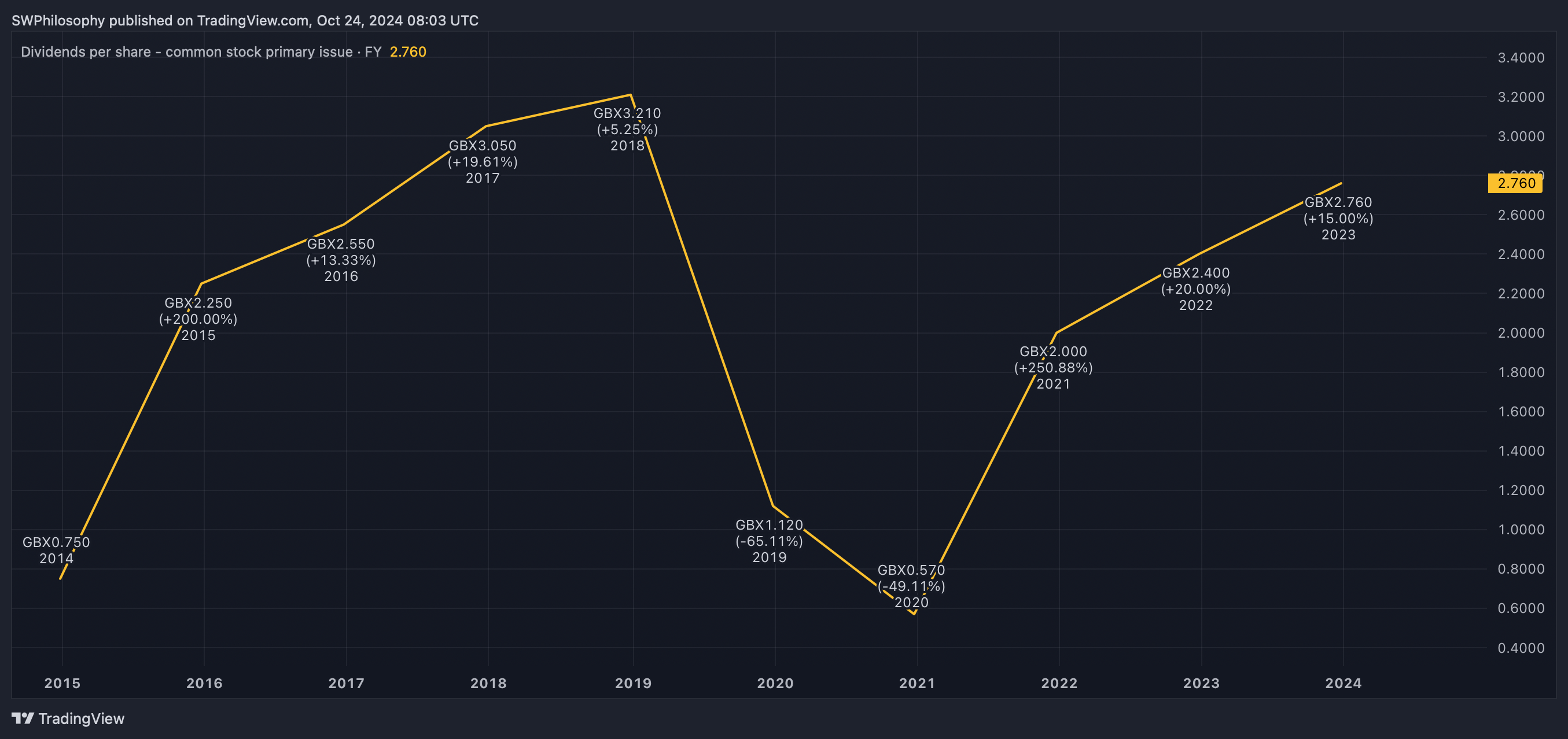Despite a 4.65% dividend yield, Lloyds Banking Group (LSE:LLOY) isn’t the first name that comes to mind when I think of FTSE 100 dividend shares. Other stocks seem more obvious.
These include the likes of Unilever (LSE:ULVR), where earnings are more stable. But over the long term, do investors get more money if they’re prepared to put up with unevenness?
Lloyds Banking Group
Like most banks, Lloyds is a relatively cyclical business. Its earnings can shift significantly from one year to another and that can result in uneven dividends from one year to another.
Lloyds dividends per share 2014-23
Created at TradingView
Investors who own the stock should expect to get more back in some years than others. There’s nothing wrong with that, but what matters is how the company performs over time.
The Lloyds share price was around 74p in October 2014. So £10,000 would have bought me 13,513 shares. And since then, the company has returned just under 23p per share in dividends.
That means I’d have received £3,070 in passive income, with more of it coming in some years than others. I think that’s good, but the question is how it compares with other alternatives.
Unilever
A decade ago, the Unilever share price was just under £25. That means I could have bought 401 shares with £10,000 and if I’d done this, I’d have received £5,260 in dividends.
[Unilever chart]
That makes it look as though the steadier performer offers better returns over the long term. And while that has definitely been the case over the last 10 years, that’s not quite the full story.
With Lloyds, the share price is as cyclical as the underlying business. And that means buying the stock when things are going well can be very different to buying it in a downturn.
Lloyds price-to-book ratio 2014-24

Created at TradingView
10 years ago, Lloyds shares were trading at a relatively high price-to-book (P/B) multiple. Looking at the returns since 2020 – when the stock was at its cheapest – tells a different story.
The story since 2020
When Lloyds stock was trading below 30p, a £10,000 investment would have bought me 34,482 shares. And if I’d invested then, I’d have received £3,030 in dividends by now.
At around the same time, Unilever stock was trading at just over £38 per share. So with £10,000, I could have bought 259 shares, which would have generated £1,719 in passive income.
In short, whether Lloyds has generated more dividend income depends on when someone bought it. At the right price, the more volatile bank stock has been a better source of cash.
That means income investors shouldn’t be too quick to dismiss the stock because its record is patchy. There have been times when volatility has generated unusually good opportunities.
Where are we now?
This raises the question of where we are now. At the moment, Lloyds shares are starting to edge towards what has been their average P/B multiple over the last decade.
That makes me think there are better opportunities elsewhere right now. But with interest rates starting to fall again, I’ll be on the lookout to see if that changes in the near future.
This post was originally published on Motley Fool







